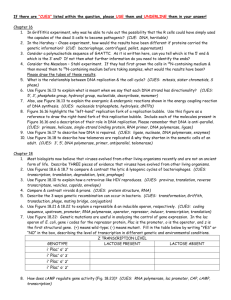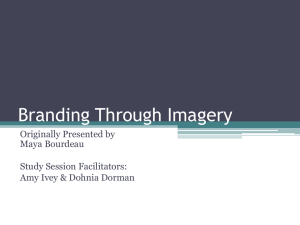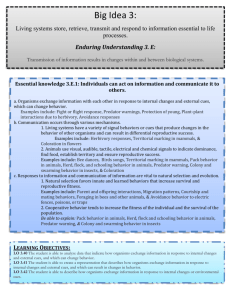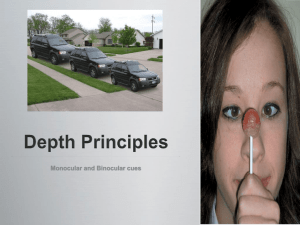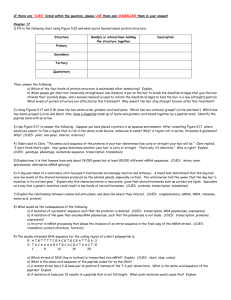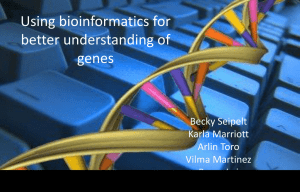If there are “CUES” listed within the question, please USE them and
advertisement
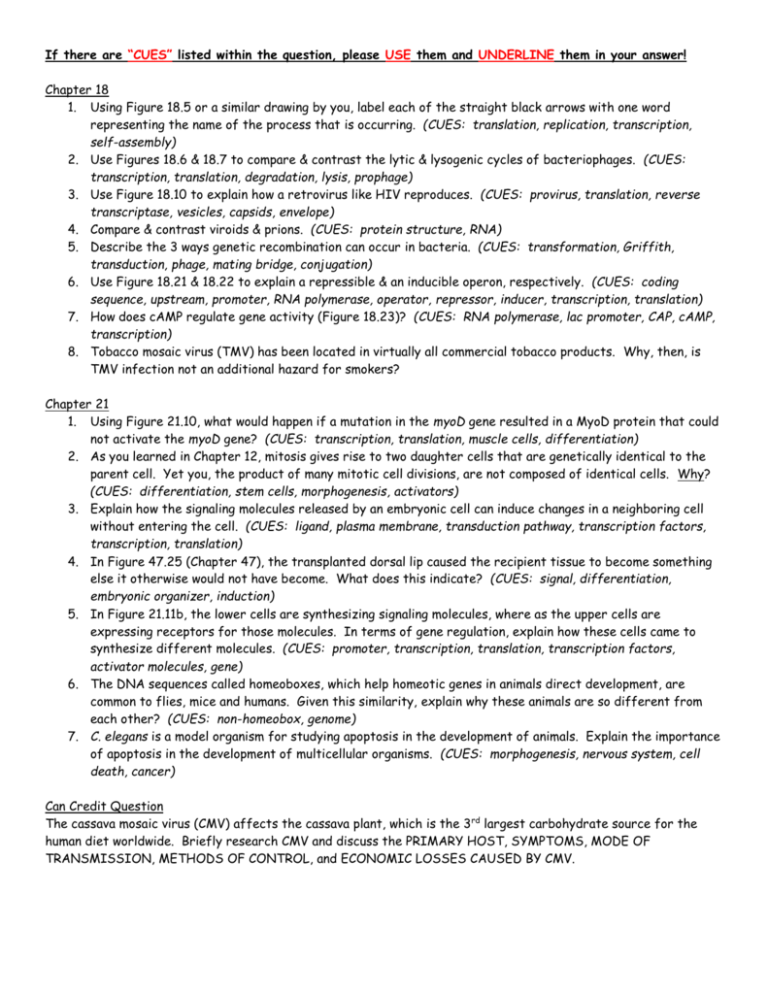
If there are “CUES” listed within the question, please USE them and UNDERLINE them in your answer! Chapter 18 1. Using Figure 18.5 or a similar drawing by you, label each of the straight black arrows with one word representing the name of the process that is occurring. (CUES: translation, replication, transcription, self-assembly) 2. Use Figures 18.6 & 18.7 to compare & contrast the lytic & lysogenic cycles of bacteriophages. (CUES: transcription, translation, degradation, lysis, prophage) 3. Use Figure 18.10 to explain how a retrovirus like HIV reproduces. (CUES: provirus, translation, reverse transcriptase, vesicles, capsids, envelope) 4. Compare & contrast viroids & prions. (CUES: protein structure, RNA) 5. Describe the 3 ways genetic recombination can occur in bacteria. (CUES: transformation, Griffith, transduction, phage, mating bridge, conjugation) 6. Use Figure 18.21 & 18.22 to explain a repressible & an inducible operon, respectively. (CUES: coding sequence, upstream, promoter, RNA polymerase, operator, repressor, inducer, transcription, translation) 7. How does cAMP regulate gene activity (Figure 18.23)? (CUES: RNA polymerase, lac promoter, CAP, cAMP, transcription) 8. Tobacco mosaic virus (TMV) has been located in virtually all commercial tobacco products. Why, then, is TMV infection not an additional hazard for smokers? Chapter 21 1. Using Figure 21.10, what would happen if a mutation in the myoD gene resulted in a MyoD protein that could not activate the myoD gene? (CUES: transcription, translation, muscle cells, differentiation) 2. As you learned in Chapter 12, mitosis gives rise to two daughter cells that are genetically identical to the parent cell. Yet you, the product of many mitotic cell divisions, are not composed of identical cells. Why? (CUES: differentiation, stem cells, morphogenesis, activators) 3. Explain how the signaling molecules released by an embryonic cell can induce changes in a neighboring cell without entering the cell. (CUES: ligand, plasma membrane, transduction pathway, transcription factors, transcription, translation) 4. In Figure 47.25 (Chapter 47), the transplanted dorsal lip caused the recipient tissue to become something else it otherwise would not have become. What does this indicate? (CUES: signal, differentiation, embryonic organizer, induction) 5. In Figure 21.11b, the lower cells are synthesizing signaling molecules, where as the upper cells are expressing receptors for those molecules. In terms of gene regulation, explain how these cells came to synthesize different molecules. (CUES: promoter, transcription, translation, transcription factors, activator molecules, gene) 6. The DNA sequences called homeoboxes, which help homeotic genes in animals direct development, are common to flies, mice and humans. Given this similarity, explain why these animals are so different from each other? (CUES: non-homeobox, genome) 7. C. elegans is a model organism for studying apoptosis in the development of animals. Explain the importance of apoptosis in the development of multicellular organisms. (CUES: morphogenesis, nervous system, cell death, cancer) Can Credit Question The cassava mosaic virus (CMV) affects the cassava plant, which is the 3 rd largest carbohydrate source for the human diet worldwide. Briefly research CMV and discuss the PRIMARY HOST, SYMPTOMS, MODE OF TRANSMISSION, METHODS OF CONTROL, and ECONOMIC LOSSES CAUSED BY CMV.



